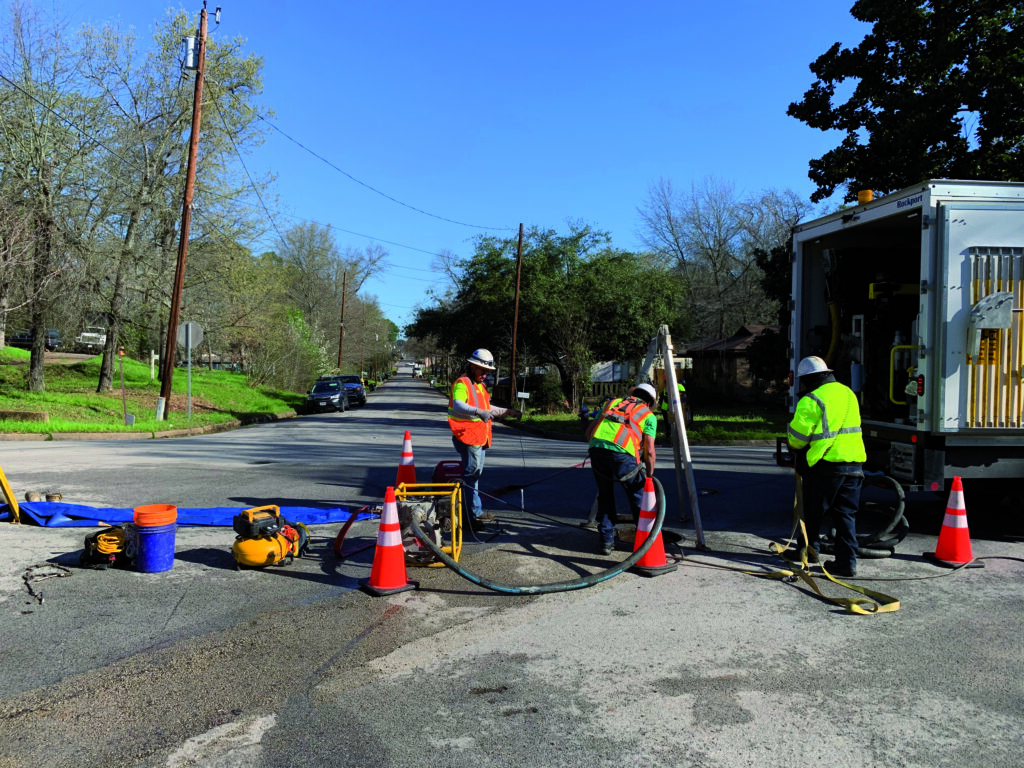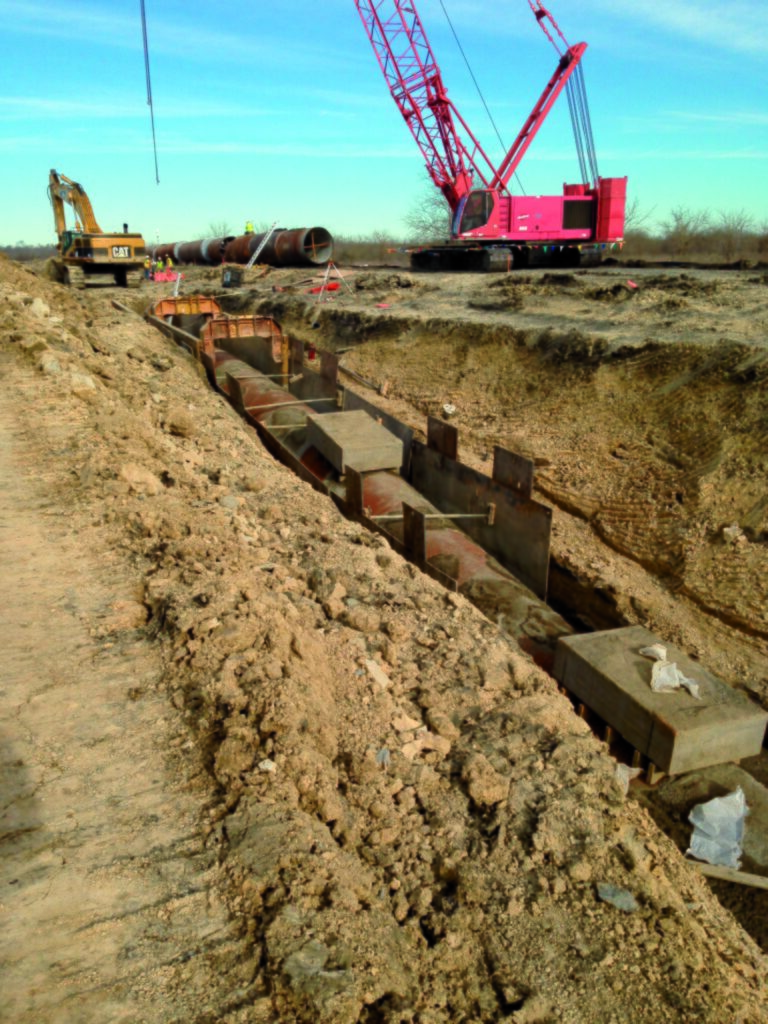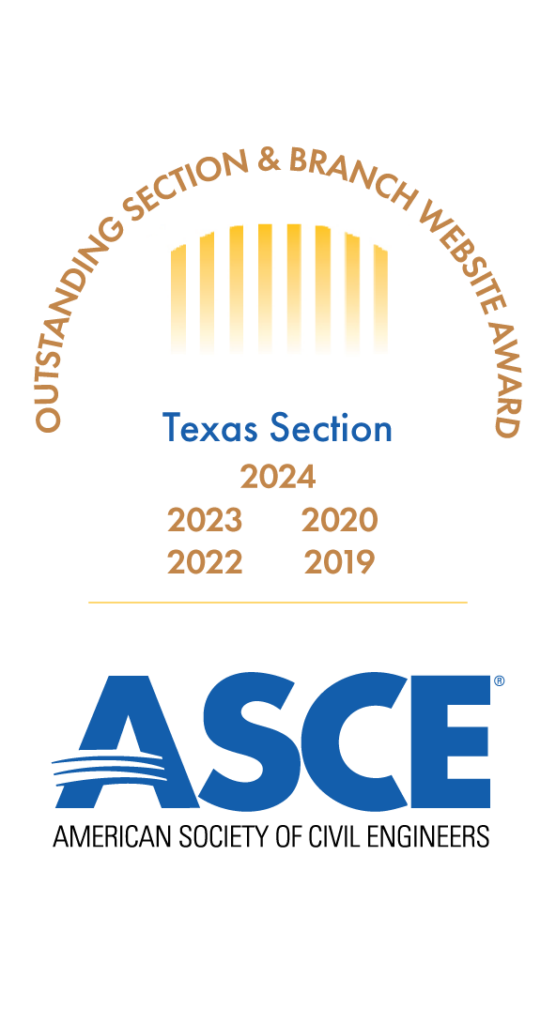Take My Money! Capital Project Construction Delivery Methods for Cities and Counties
Author: Mathew Busby PE
May 2023

Public works covers a wide range of needs from building operations to wastewater rehabilitation. Cities and counties are required to follow specific rules regarding the purchasing of goods and services, but the actual method employed can vary depending on the needs of the department or project. This article focuses on the different methods used to procure construction services – such as building a road or pump station. Below are the major procurement methods and their advantages and disadvantages.
Procurement Methods
Low bid contracting is the most common method employed for solicitation of construction services – lowest responsive bid wins! The advantage of low-bid is obvious – the winner has the lowest cost, but no other factor such as experience or safety record is considered.
Best-value bids utilize a set of criteria to determine which bidder provides the best value to the municipality. It must be stated in the bid documents that the contract will be awarded to the bidder who provides the best value. The municipality may specifically consider the purchase price, reputation, quality, the extent to which the goods or services meet the municipality’s needs, the bidder’s past relationship with the municipality, the impact on the ability of the municipality to comply with laws and rules relating to contracting with historically underutilized businesses and nonprofit organizations employing persons with disabilities, the total long-term cost to the municipality to acquire the bidder’s goods or services, and any relevant criteria specifically listed in the request for bids or proposals. Other relevant criteria may include safety record and current workload. Contractors can provide their Experience Modification Rate (EMR, a rating determined by insurance agencies) in their bid to evaluate this factor.
Cost-plus-time or A+B Bidding is more commonly used in Texas Department of Transportation (TxDOT) bids but is sometimes used by municipalities where the cost of delays to the road user is very high. The cost (A) is the conventional low-bid type cost for all work. The time (B) is the number of calendar days needed to construct the project and is estimated by the bidder. In the bid documents, a cost per day is established and is used in conjunction with the number of days bid to award the contract. Payment to the contractor is limited to the actual bid cost (A) of the project. If a contractor bid an extremely aggressive schedule, they may try to push on delay claims for material submittals, request for information reviews, or other items that require responses from the owner or engineer.
Competitive Sealed Proposal (CSP) is used to include factors other than price to determine the winning bidder. The award of a CSP is scored on criteria established in the bid documents. Cities are limited to expenditures of $1.5 million or less for heavy civil construction projects (including buildings or structures that are incidental to those projects), but in certain circumstances this limit can be exceeded. An important benefit of CSP is the allowance for negotiation with the winning proposer before finalizing the contract. For example, if you have a contractor already mobilized nearby and can advance or delay the project to accommodate their other work, the contractor may be able to lower their price. Similarly, contractors could value engineer alternate materials or pavement sections. The scope, schedule, or budget can be modified based on information provided in the proposal. This negotiation process also must be described in the solicitation.
Potential evaluation criteria for a CSP include price, experience and reputation, quality of goods or services, minority, disadvantaged, or underutilized business participation, safety record, proposed personnel, “right-sized” for project, and other relevant factors specifically listed. The categories used to evaluate the CSP and their weights relative to each other heavily influence the ranking process.

The City of Tyler implemented improvements to two of its major sanitary sewer basins using the CSP method (Photo Credit: LAN)
Design-Build is used to overlap the design and construction phases and is common for extremely large public projects and has been implemented in Texas by TxDOT and other agencies. Design build isn’t necessarily used to make projects cheaper but can overlap the design and construction phases considerably to compress the schedule. For civil projects, price cannot be considered for the first phase of evaluation. Based on population, there is a limit to the number of design-build projects a municipality can perform each year.
A caveat to the aggressive schedule typical of a design-build project is the resources necessary to review required submittals. For fast-tracked projects, review submittals can have short intervals with fast review timelines to keep up with construction. Cities are required by law to have an engineer (can be city staff) independent of the design builder to serve as the city’s representative.
In situations where small cities do not have staff, availability, or requisite expertise, Construction Manager-Agent can be used to hire a third-party representative to deliver a facility project. The Construction Manager-Agent can implement any of the procurement methods typically available to deliver a project and cannot perform any of the work themselves. These Construction Manager-Agents are typically architects, engineers, or general contractors with experience using this delivery method and represent the owner in a fiduciary capacity.
Construction Manager at Risk (CMAR) is best suited for larger projects that are schedule sensitive, difficult to define, or subject to change during construction. The CMAR serves as the general contractor and provides design phase consultation to evaluate costs, schedules, and implications of design decisions. CMAR input during the design phase can improve quality and constructability. It also allows for early packages for long lead-time equipment, excavation, or other work that can start while design is being finalized.

For recurring work with an indefinite schedule or quantity such as sidewalk replacement or ditch and culvert maintenance, cities can solicit for job order contracts that provide a “menu” of services. It is important to include a specific variety of items that cover the expected work – specificity limits the risk for a bid item and helps control costs. If this work is tied to an annual budget, including the anticipated amount of work in the bid documents will help the contractor price the work with their available workforce. Unit prices can be tied to construction unit price books to accommodate changes in price over the duration of the contract.
Some cities utilize purchasing cooperatives to purchase a wide variety of goods or services. These cooperatives provide several contractors that have already satisfied the procurement requirements. The list of prices is a maximum and work is typically performed at a negotiated rate lower than the list price, based on project specific details and quantities. This can be an efficient way for cities to complete specialty work with a preferred contractor (such as sewer rehabilitation) or utilize budget surplus to perform additional maintenance or repair work.
Cities with existing job-order contracts sometimes make their contracts available to other cities through interlocal agreements (ILAs). ILAs must be specifically allowed in the existing contract. This can be an effective way to leverage your neighbors’ contractors to perform similar work. It is important to compare the standards used and verify they meet your standards.
Conclusion
Different procurement methods can help accomplish different goals. Using a method other than low bid should only be considered to alleviate a specific risk or accomplish a specific goal, such as schedule, quality, or logistics. Each method comes with a tradeoff. Regardless of the method chosen, the total amount of work is the same for a given project and changes in procurement methods can affect staff availability. When choosing a method, consider what the critical factor is (scope, schedule, budget, etc.) and determine which method best minimizes risk and provides the most flexibility for that critical factor.
Mathew Busby, P.E., is an associate and team leader at Lockwood, Andrews & Newnam, Inc. (LAN), a national planning, engineering, and program management firm. He can be reached at [email protected].


